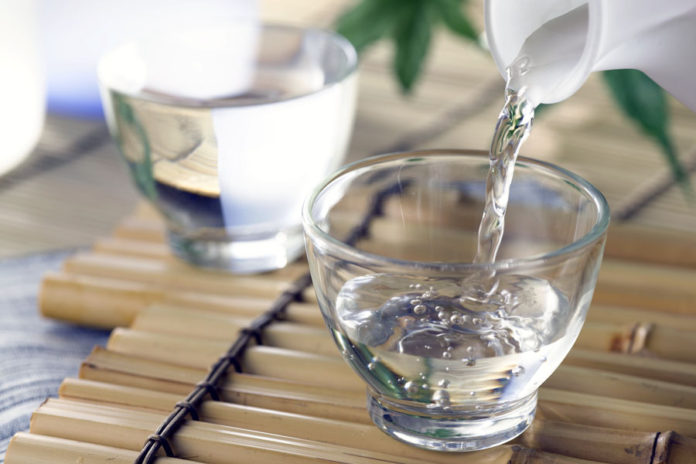You’ve heard the term sake but you don’t quite know what it is. Sake, made from fermented rice, is an up-and-comer in the world of wine and spirits, and Americans consume about 35 percent of all sake exported from Japan, according to John Gauntner’s Sake World.
Often remembered as that simple, warm drink consumed exclusively at sushi bars and Japanese restaurants, it’s sometimes notorious for its associations with sake-bomb-induced debauchery. To gain a better understanding of this complex beverage, here are five common sake myths — debunked!
- Sake is Too Strong. False! The association of sake with strong alcoholic drinks may be more connected to an attitude of yake-zake, the Japanese term for “drinking to become inebriated,” than to the actual alcohol by volume (ABV), which typically hovers between 15 and 20 percent, making it a great choice to enjoy on its own or pair with food. Sake is also an excellent cocktail ingredient.
- Sake is Served Hot. False! Sake was originally served warm in order to mask certain off-putting flavors present prior to the rise of premium sakes. More recently, the trend of high-quality sakes has shifted the popular serving temperature from warm to “slightly chilled.” But sake shouldn’t only be enjoyed cold. Because it’s very temperature-sensitive, flavors will show differently based on slight changes in degrees. To understand these differences, try a rich and lively sake, such as Joto Junmai “The Green One,” (SRP: $22.99) both chilled and warm. As a general rule of thumb, dry sakes and Junami sakes are better suited to heat. To warm sake at home, place a mug directly in a pan of boiling water. Pour sake into the mug, testing the temperature with your finger as it heats.
- It’s Only Available in Japanese Restaurants. False! You can find now find sake in restaurants serving Western cuisine, at specialty shops, and wine and liquor stores. Pick up a bottle to try at home. Today, many chefs and beverage enthusiasts are pointing to pairing possibilities that extend far beyond Japanese food. Its relatively low acidity and no tannins make it extremely food-friendly.
- Sake is Simple. False! Just as for wine, there are sake sommeliers who devote themselves to the study of sake’s intricacies. Integrally connected to Japanese culture and history, sake is the product of complex production methods yielding an array of flavors, from fragrant to aged and mature and from rich to light and smooth. Take, for instance Joto Daiginjo “The One with the Clocks,” (SRP: 44.99) produced by the Nakao Brewery with a proprietary apple yeast. Made with milled rice, its delicate and clean with hints of green apple.
- It Demands Special Glassware. False! While sake serving sets can certainly add a sense of ceremony to the experience, today, glass has been deemed acceptable by sake professionals, and any wineglass will do the trick. To observe what an unfiltered sake looks like, try Joto Junmai Nigori “The Blue One” (SRP: $22.99) in a wineglass and pair with spicy Asian take-out.
Whether you’re mixing up cocktails or searching for a dinner pairing, consider sake. An understanding of its complexities can help you make the right selection.











